MÉDECINE CHINOISE TRADITIONNELLE

Artemisia annua L est originaire de Chine, son nom chinois Qing Hao, signifie littéralement « herbe verte ».
La Prix Nobel de Médecine Youyou Tu explique dans son livre, « de Artemisia annua L. aux artemisinines » qu’en Médecine Traditionnelle Chinoise, Qing Hao est le nom générique d’une catégorie d’herbes médicinales (Armoises), contenant 6 variétés. Chacune contient différents composants chimiques avec différents degrés d’efficacité dans le traitement du paludisme. Bien qu’il existe différentes variétés de Qing Hao, selon Youyou Tu, seule A. annua L. a une forte activité antipaludique avérée.
Ainsi, A. annua L. est considérée par elle comme l’authentique plante médicinale contre le paludisme.
168 avant JC : La plus ancienne trace écrite de l’utilisation médicinale de Qing Hao provient d’un morceau de soie où sont consignées les « 52 ordonnances » (Wu Shi Er Bing Fang) et qui fut déterré des tombes de la dynastie des Han Mawangdui. L’inscription recommande l’utilisation de Qing Hao (Artemisia) pour le traitement des hémorroïdes.
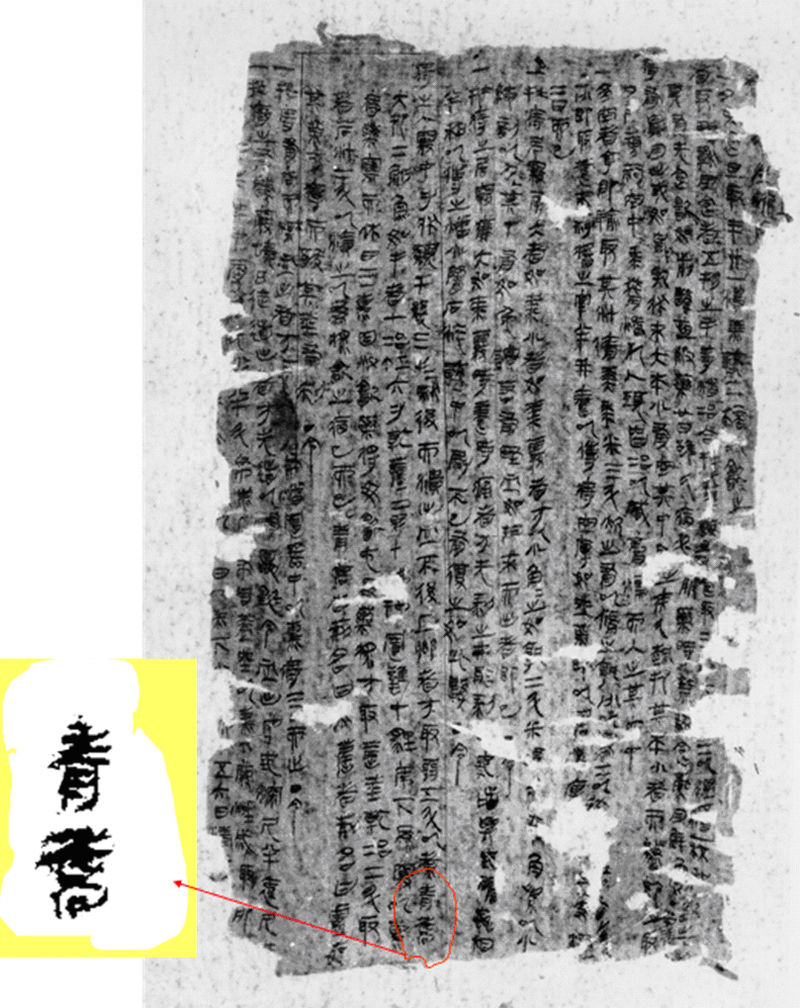
Le Wushi'er Bingfang (chinois : 五十二病方 ; pinyin : Wǔshí'èr Bìngfāng)
200 après JC : 1ère rédaction du Shen Nong Ben Cao Jing, livre fondateur de la phytothérapie chinoise, somme de la connaissance de la phytothérapie transmise oralement depuis des siècles (Shou-zhong, 1997). Le texte affirme qu’entre autres propriétés, Qing Hao « soulage la chaleur logée dans les joints », ce qui pourrait être interprété comme le traitement de maladies fébriles.
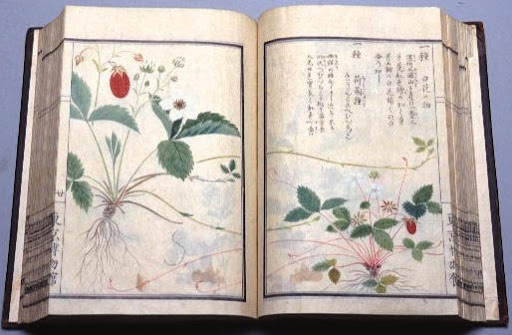
Shen Nong Ben Cao Jing 神农本草经 (Traité de matière médicale de Shen Nong)
Zhang Ji (150-219 après JC) dans son texte classique, sur « les dommages causés par le froid » (Shang Han Lun) recommande une décoction de Qing Hao pour traiter les fièvres avec transpiration et jaunisse (Mitchell et al., 1999).
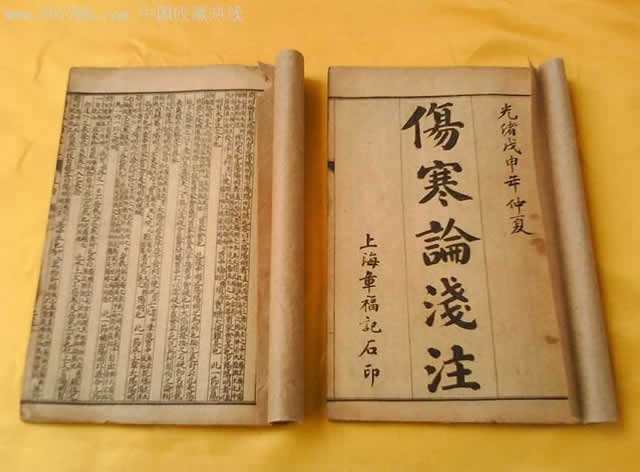
le Shanghan Lun 傷寒論 [Traité des attaques du froid et de diverses maladies]
En 340 après JC : « Le Manuel des prescriptions pour les traitements d’urgence » (Zhouhou Beiji Fang), recommande également l’utilisation de Qing Hao pour les fièvres. Le mode de la préparation était une extraction aqueuse à froid : une poignée des parties aériennes de la plante devait être trempée dans deux Sheng (environ 1 à 2 l) d’eau, et le jus devait être bu en entier (Tu, 1999).
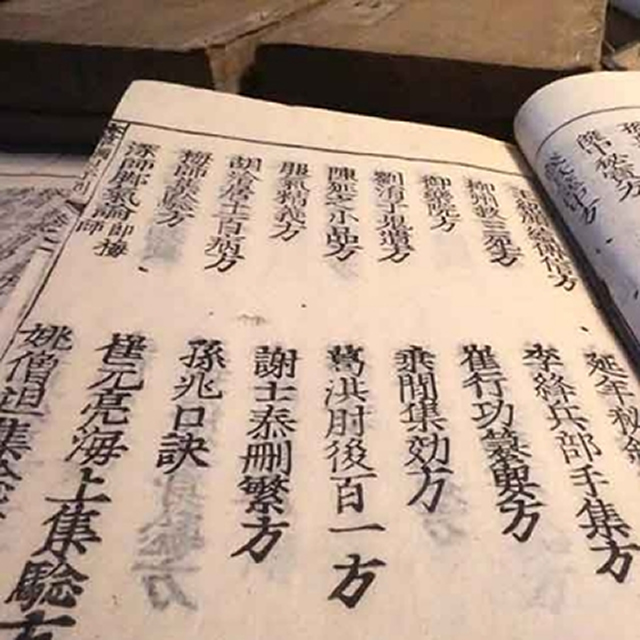
Médecine chinoise d'urgence, le Zhouhou beijing fang 肘后备急方 (Médicaments d'urgence à garder à portée de main), par l'alchimiste et érudit du IVe siècle, Ge Hong 葛洪.
Entre 960 et 1279 après JC : sous la dynastie des Song, la décoction de Qing Hao est décrite dans la « Collection médicale générale de la bienveillance royale » (dans le Sheng Ji Zong Lu, « Archives générales du Saint-Soulagement universel »).
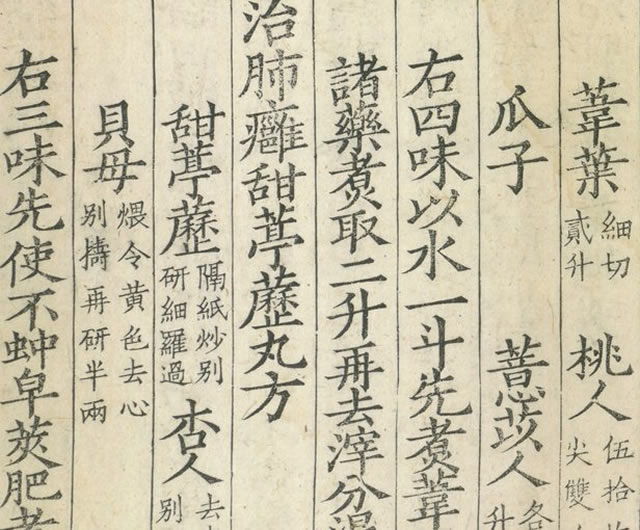
Sheng Ji Zong Lu, « Archives générales du Saint-Soulagement universel »
Entre 1271 et 1368 après JC : sous la dynastie Yua, Les pilules de Qing Hao sont décrites dans le livre « Maîtrise en médecine de Danxi » (Dan Xi Xin Fa).
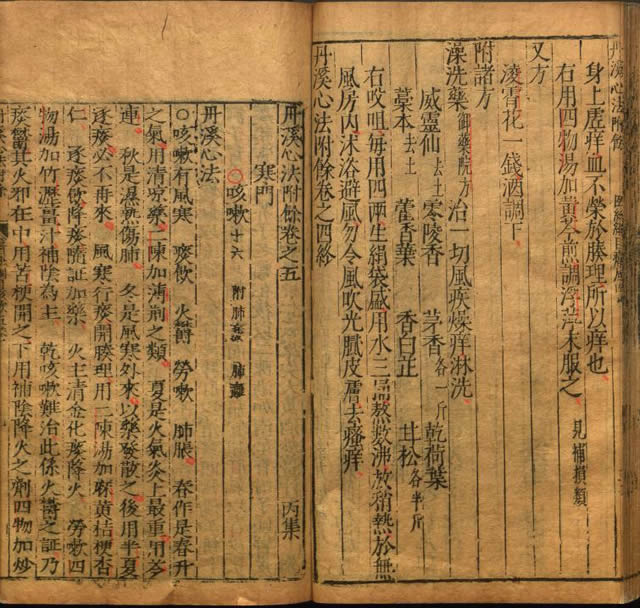
« Maîtrise en médecine de Danxi » (Dan Xi Xin Fa)
Entre 1368-1644 après JC : sous la dynastie Ming, la poudre Qing Hao est relatée dans les « Prescriptions pour le soulagement universel » (Pu Ji Fang).
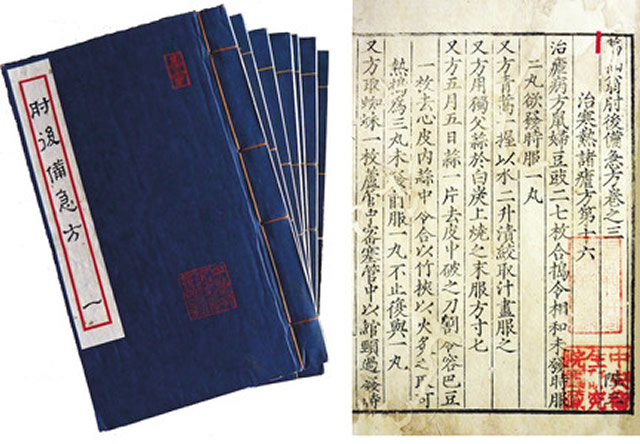
« Prescriptions pour le soulagement universel » (Pu Ji Fang)
En 1596, Li Shizhen, sous la dynastie Ming : décrit l’utilisation de Qing Hao pour traiter la fièvre paroxystique du paludisme dans son Ben Cao Gang Mu (Compendium Materia Medica).
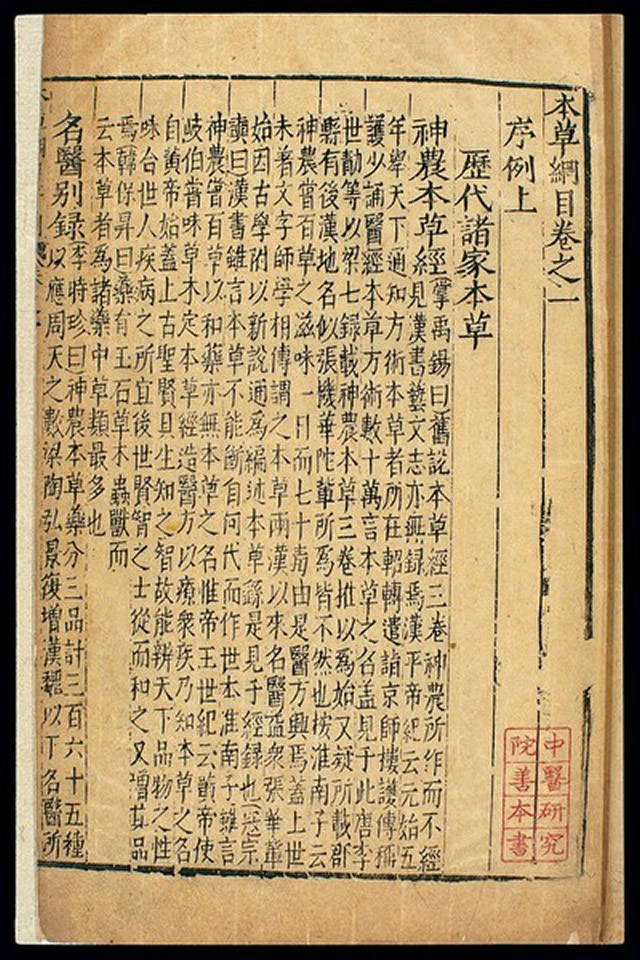
Ben Cao Gang Mu (Compendium Materia Medica)
En 1798 : Wen Bing Tiao Bian utilise Qing Hao en mélange avec d’autres plantes selon le type de fièvre (cité dans Laughlin et al., 2002)
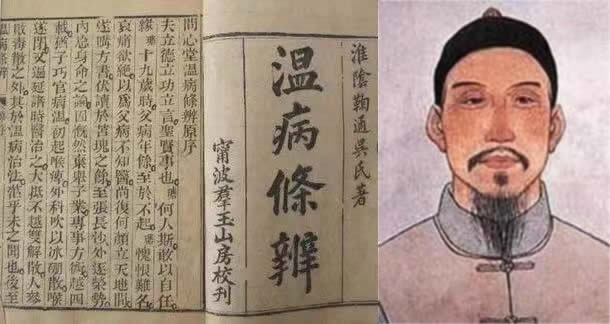
Wen Bing Tiao Bian(cité dans Laughlin et al., 2002)
En 1992 : Feuilles et tiges d’A. annua sont également brûlées en Chine comme insecticide fumigant pour tuer les moustiques (Foster et Chongxi, 1992).
Ainsi, au cours de ces plus de 2 millénaires, différentes préparations de Qing Hao ont été recommandées dans ces différents textes : du jus de feuilles écrasées, des décoctions dont une de 30 g d’A. annua par jour, des comprimés, des feuilles séchées en poudre à raison de 3 g par jour pendant 5 jours, et des plantes fraîches à une dose de 3 g par jour, du vin au Qing Hao, de la rosée de Qing Hao …(QACRG, 1979 ; Foster et Chongxi, 1992).
Nom scientifique : Artemisia annua
Noms communs : absinthe chinoise, armoise annuelle
Noms anglais : sweet annie , sweet wormwood , sweet sagewort , annual wormwood
Classification botanique : famille des astéracées ( Asteraceae )
Propriétés médicinales de l'absinthe chinoise
Utilisation interne
Participe au traitement du paludisme.
Agit sur les troubles intestinaux (vers parasitaires et constipation ponctuelle).
Réduit les symptômes des insolations et les maux de tête.
Diminue notablement les saignements de nez.
Utilisation externe
Utilisées en cataplasmes, les feuilles d'absinthe chinoise sont indiquées contre la migraine et contre la fièvre.
Indications thérapeutiques usuelles
L'absinthe chinoise est préconisée dans le traitement de la malaria (paludisme) et indiquée lors d'une insolation ou pour calmer la fièvre.
Autres indications thérapeutiques démontrées
Cette plante est employée pour faire disparaître les vers parasitaires présents dans les intestins, en inhibant leur reproduction.
Également:
Des recherches récentes qui ont utilisé la plante pour combattre les cellules cancéreuses.
Des équipes de recherche testent l'efficacité de l'Artemisia annua contre le Covid-19
Sources:
Youyou Tu, De Artemisia annua L. aux artemisinines, Quintesciences, EDP Sciences
M. Wilcox and al., Artemisia annua as a Traditional Herbal Antimalarial in CRC Press, 2004
E. Hsu, The history of qing hao in the Chinese materia medica, Transactions of the Royal Society of Tropical Medicine and Hygiene (2006) 100, 505—508















































